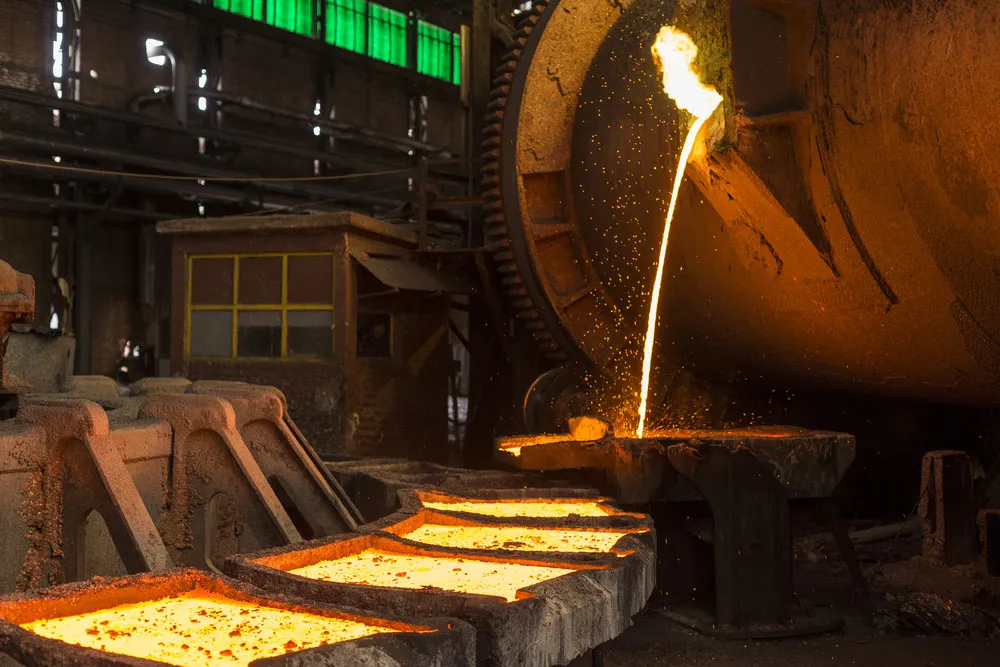Smelting is a critical metallurgical process that extracts metals from their ores through the application of heat and chemical reduction. This method is essential in the production of various metals, including iron, copper, lead, and zinc, and plays a pivotal role in the global metal industry. This article explores the principles, techniques, applications, and environmental considerations of smelting.
What is Smelting?
Smelting is the process of heating ore to extract a base metal from its mineral form. During smelting, the ore is combined with a reducing agent, often carbon in the form of coke, which reacts with the metal oxides in the ore, leading to the reduction of the metal ions to their elemental form. The process results in molten metal that can be further refined and shaped into products.
The Smelting Process
The smelting process generally involves several key steps:
- Preparation of the Ore:
- Concentration: Before smelting, ores are usually concentrated through methods such as crushing, grinding, and flotation to increase the metal content.
- Roasting: Some ores undergo roasting, a thermal treatment that converts metal sulfides to oxides, making them easier to reduce.
- Furnace Operations:
- Types of Furnaces: Smelting is typically carried out in specialized furnaces, including blast furnaces for iron and cupola furnaces for cast iron. Each type of furnace operates under different conditions and is suited for specific ores.
- Charging the Furnace: The concentrated ore, along with a reducing agent (coke), and flux (a substance that helps remove impurities) are loaded into the furnace.
- Reduction Reaction:
- Heating: The furnace is heated to high temperatures, usually between 1,200°C and 1,600°C (2,192°F to 2,912°F), to facilitate the reduction reaction.
- Chemical Reactions: During this stage, carbon reacts with the oxygen in the metal oxides, producing carbon dioxide and reducing the metal ions to their elemental state.
- Metal Collection:
- Molten Metal: The molten metal sinks to the bottom of the furnace, where it can be tapped off for further processing.
- Slag Formation: The impurities and flux form a separate layer of slag, which can be removed from the surface of the molten metal.
Applications of Smelting
Smelting is fundamental in the production of various metals, and its applications are extensive:
- Iron and Steel Production: The primary use of smelting is in the production of iron, which is then converted into steel, a key material in construction and manufacturing.
- Copper Production: Smelting is crucial for extracting copper from its ores, allowing for the production of electrical wires, plumbing, and various alloys.
- Lead and Zinc Production: Smelting processes are employed to produce lead and zinc, which are used in batteries, roofing, and galvanizing steel.
- Precious Metals: Smelting is also used in refining precious metals like gold and silver, often following other processes such as electrolysis or cyanidation.
Environmental Considerations
While smelting is an essential industrial process, it poses several environmental challenges:
- Emissions: The smelting process can release various pollutants, including sulfur dioxide, nitrogen oxides, and particulate matter, contributing to air pollution and acid rain.
- Waste Management: The production of slag and other waste materials requires careful management to prevent environmental contamination.
- Resource Consumption: Smelting operations consume significant amounts of energy, contributing to carbon emissions and raising concerns about sustainability.
- Regulatory Compliance: Stricter environmental regulations are driving the industry to adopt cleaner technologies and practices, focusing on reducing emissions and improving energy efficiency.
Innovations and Future Trends
The smelting industry is evolving, with ongoing research and technological advancements aimed at improving efficiency and sustainability:
- Cleaner Technologies: Innovations such as electric arc furnaces and direct reduction methods are being explored to reduce emissions and energy consumption.
- Recycling: The increased focus on recycling scrap metal reduces the need for virgin ore and minimizes the environmental impact associated with smelting.
- Carbon Capture: Technologies aimed at capturing and reusing carbon emissions are being developed to mitigate the environmental effects of smelting.
- Automation: The integration of automation and artificial intelligence in smelting operations enhances efficiency, safety, and monitoring capabilities.
Conclusion
Smelting is a fundamental process in the extraction and production of metals, playing a crucial role in the global economy. While it provides essential materials for various industries, it also poses significant environmental challenges that require careful management and innovation. As the demand for metals continues to grow, the industry must adapt by embracing cleaner technologies and sustainable practices to ensure the responsible production of metals for future generations. Through ongoing advancements and a commitment to reducing environmental impacts, smelting can evolve to meet the needs of a rapidly changing world.
